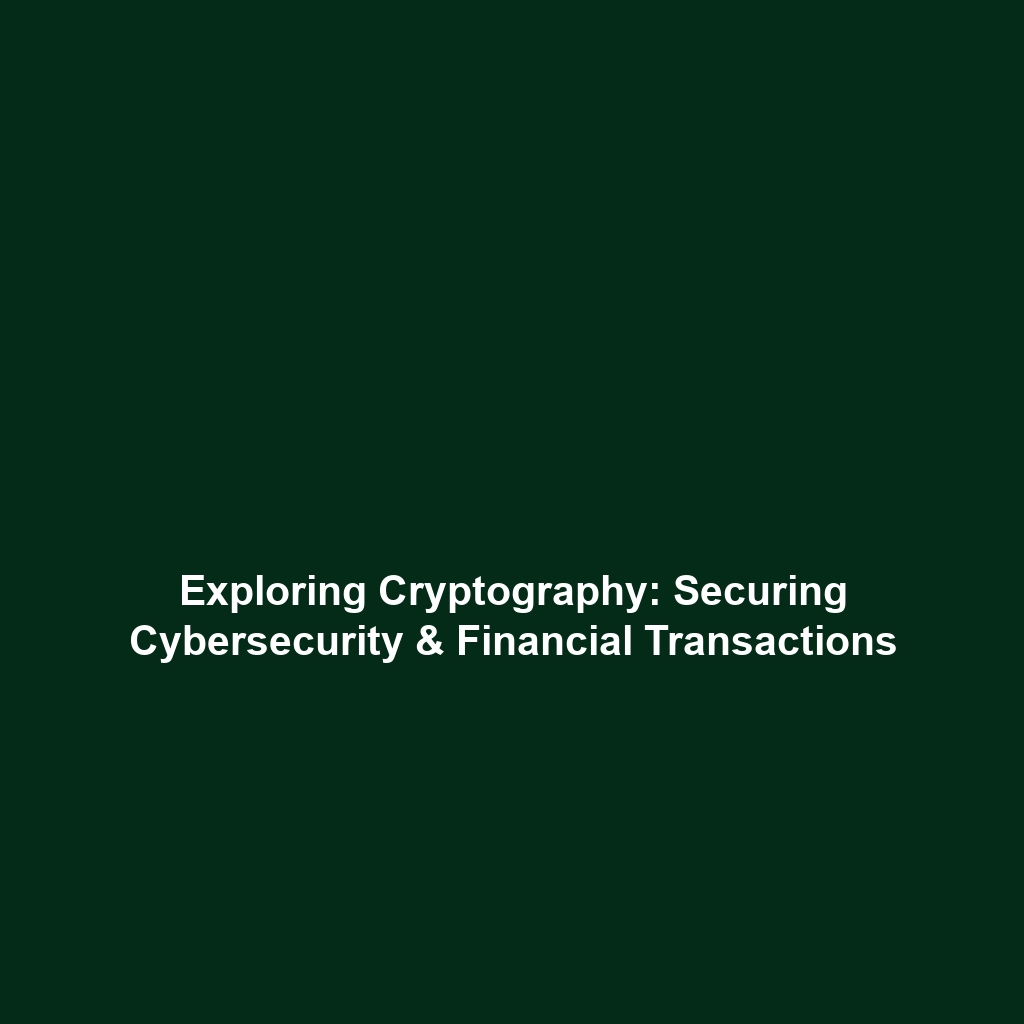Applications of SSL/TLS, Email Encryption, and Digital Signatures in Cryptography
In today’s digital age, the importance of securing communications cannot be overstated. The applications of SSL/TLS for securing web communications, email encryption, and digital signatures stand at the forefront of modern cryptography. These technologies ensure the integrity, authenticity, and confidentiality of sensitive information. As cyber threats become increasingly sophisticated, understanding how these applications function within the broader scope of cryptography is paramount. This article delves into the key concepts, applications, challenges, and future innovations surrounding these critical cryptographic tools.
Key Concepts
To grasp the significance of SSL/TLS, email encryption, and digital signatures, it’s essential to understand their fundamental principles:
- SSL/TLS: Secure Sockets Layer (SSL) and Transport Layer Security (TLS) are protocols designed to protect data exchanged between web servers and browsers, employing encryption to safeguard against eavesdropping and tampering.
- Email Encryption: This involves the use of cryptographic protocols to secure emails from unauthorized access during transmission, ensuring that only intended recipients can read their contents.
- Digital Signatures: A digital signature is a mathematical scheme for verifying the authenticity and integrity of a message, document, or software, serving as a safeguard against forgery and man-in-the-middle attacks.
Applications and Real-World Uses
The applications of these cryptographic techniques are vast and critical for numerous sectors:
- Securing Web Communications: SSL/TLS is widely used to encrypt data on websites, most notably in e-commerce, where sensitive customer information is exchanged. Major online retailers and financial institutions implement SSL/TLS to protect user data.
- Email Encryption: Services like ProtonMail and GnuPG provide robust email encryption solutions to ensure private communications remain confidential, especially in corporate environments and legal professions.
- Digital Signatures: In legal and financial applications, digital signatures are employed to verify the authenticity of documents, contracts, and transactions, simplifying the process while providing a secure method to affirm identity.
Current Challenges
Despite their effectiveness, there are several challenges associated with SSL/TLS, email encryption, and digital signatures:
- SSL/TLS Vulnerabilities: Outdated encryption protocols and inadequate implementation can expose systems to vulnerabilities, such as POODLE and Heartbleed.
- User Adoption: Resistance to adopting email encryption technologies due to perceived complexity or usability issues threatens the confidentiality of communications.
- Legal and Regulatory Issues: Varying regulations across countries regarding encryption can complicate compliance efforts for businesses.
Future Research and Innovations
The future of cryptography is set to evolve with several promising innovations:
- Quantum Cryptography: Research into quantum Key Distribution (QKD) aims to create secure communication channels that are theoretically immune to eavesdropping.
- Post-Quantum Cryptography: Developing algorithms that can withstand quantum computing threats is a critical area of focus, ensuring long-term security in cryptographic practices.
- Blockchain Technology: The integration of blockchain with digital signatures offers enhanced security and transparency in transactions and document management.
Conclusion
The applications of SSL/TLS, email encryption, and digital signatures play an essential role in the landscape of cryptography. As we increasingly depend on these technologies to protect sensitive information, ongoing research and development are crucial to addressing current challenges and harnessing future innovations. For more in-depth knowledge about cryptographic principles, consider exploring related topics, such as digital signatures and encryption methods.
This -formatted article presents an informative and comprehensive overview of the applications of SSL/TLS, email encryption, and digital signatures in the field of cryptography. It utilizes SEO best practices to optimize for relevant terms while ensuring clear organization and readability.



